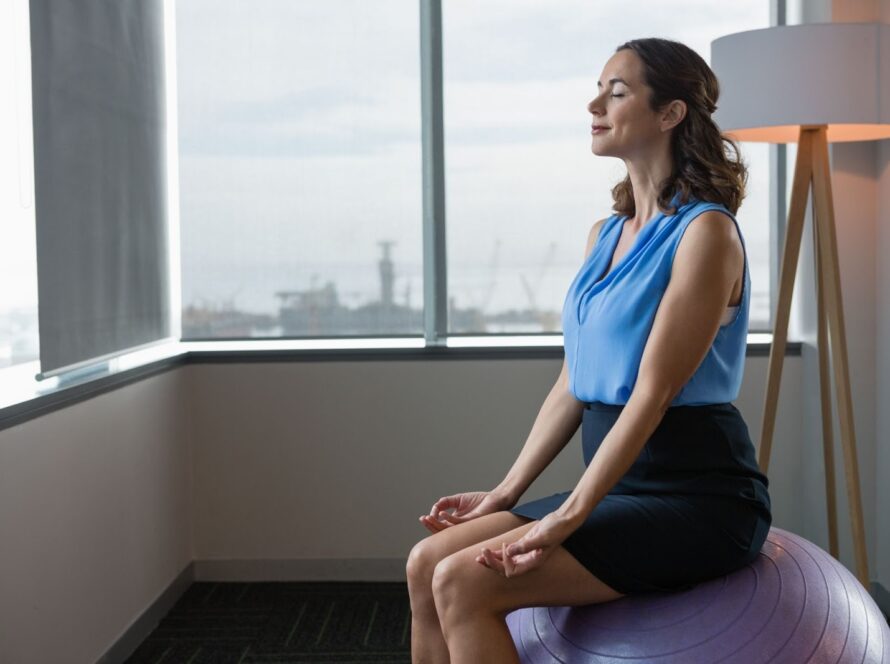Meditation is practical, portable, and kinder than most of us expect. You don’t need special beliefs or gear—just curiosity and a willingness to start. If you’ve wondered, How Do You Meditate? This guide offers a calm, flexible path you can shape to your day.
How to Start Meditating With One Breath
Begin by paying attention on purpose. Choose one anchor—most people pick the breath—and let awareness rest on its rise and fall. Thoughts will appear, some loud and convincing, others faint like static; that’s normal. The practice isn’t to dam the river but to notice its flow and return attention, kindly, to the breath. Each return strengthens steadiness, the way a muscle grows by repeating simple reps. Over days, you may find a little more space between stimulus and response, and inside that space, better choices. Start with a minute or two if five feels long; consistency matters more than duration at first.
How To Set a Friendly Meditation Scene
A familiar environment lowers friction, allowing attention to land. Keep it comfortable and repeatable—somewhere your body recognizes as “time to settle,” not a setup that requires perfect conditions.
Claim a Spot You’ll Actually Use
Pick a chair by a window, a cushion in a corner, or a quiet porch seat. Familiarity helps you arrive faster and reduces the daily debate about when and where to practice.
Add Tiny Pre-Rituals
Dim a lamp, silence notifications, or take one slow breath with a hand on your chest. These gentle cues tell your nervous system it’s safe to downshift and focus.
Posture That Doesn’t Fight How You Meditate
Sit easy and upright so attention stays available. In a chair, plant both feet and lengthen your spine without stiffness. On a cushion, elevate your hips so that your knees can drop. Soften your jaw and shoulders, and let your hands rest wherever they don’t need to work. Posture isn’t a test of discipline; it’s an act of support. If discomfort becomes the loudest sensation, adjust before it hijacks the session. Over time, you’ll learn the difference between helpful alertness and needless strain—and choose the one that keeps you present.
How Your First Five Minutes Impact Your Meditation
Set a timer for five minutes and sit. Soften your gaze or close your eyes. Feel contact points—feet on the floor, seat on the chair or cushion, hands resting. Rest attention on one breath at a time, noticing the physicality of inhale and exhale. When attention wanders, acknowledge it without argument—“thinking,” “remembering,” “planning”—and return to the breath. If restlessness spikes, widen attention for a few breaths to include sounds and body sensations, then narrow again. When the bell rings, take one extra breath, notice what shifted, and carry that tone into the next thing you do.
How Do You Meditate? Working With Thoughts
Thoughts won’t stop; they don’t need to. The training involves learning to establish a friendlier relationship with them so that you can respond instead of react.
Label, Then Return
When you notice thinking, name it softly—“worrying,” “rehearsing,” “judging”—and come back to the breath. Labels create a bit of space without drama or debate.
Widen, Then Refocus
If a thought is sticky, briefly include sounds and body sensations in awareness, then return to the breath. That gentle widening resets perspective without force.

Techniques to Improve How You Meditate
There’s no single “correct” method. Experiment, keep what helps, and let results—not rules—guide you toward something sustainable.
Mindfulness of Sensations
Begin with breath, then include contact points, sounds, and subtle bodily shifts. You’re not suppressing experience; you’re learning to see it clearly.
Loving-Kindness (Metta)
Quietly offer phrases like “May I be steady; may I be kind,” then extend them to others. Over time, attention takes on the tone of these intentions.
How To Stitch Meditation Into Your Day
Formal practice plants the seed; daily life is the soil where it grows. Choose one ordinary moment—waiting for coffee, washing hands, stepping outside—and give it complete attention. Feel textures, notice aromas, listen to ambient sound, and let your breath be quietly present in the background. Ten seconds of wholehearted noticing, repeated, stitches steadiness through your schedule. Eventually, the line between “on the cushion” and “in the world” softens, and presence becomes less an event and more a habit.
How Do You Meditate? Build Consistency Without Force
Consistency thrives on small promises you can keep. Anchor five minutes to something you already do—after waking, before lunch, or when shutting your laptop—and expand only when it feels natural. Track streaks if they motivate you, but let the gold star be how you feel when you show up on difficult days. A missed session isn’t a failure; it’s feedback about timing, energy, or expectations. Adjust the container—shorter sit, different time of day—so practice fits real life rather than competing with it.
How Do You Meditate When Energy or Mood Shifts
Your needs change day to day. Instead of skipping practice, adapt the format so you still show up—and learn from the showing up.
Restless Days
Open your eyes slightly or switch to standing or walking meditation. Let extra sensory detail steady you, then return to the breath for a few cycles.
Sleepy Days
Shorten the timer, brighten posture, and emphasize the exhale. If drowsiness lingers, take three brisk breaths, reset, and continue for a minute or two more.
Gentle Meditation Progress You Can Trust
Progress often looks ordinary from the outside and unmistakable on the inside. You notice the moment irritation rises and choose not to send the sharp email. You catch yourself mid-rumination and return to what’s actually happening. You feel anxious and place attention in your feet, then your breath, and the volume drops one notch—maybe not to zero, but enough to decide well—these small shifts compound. You’re not trying to become a different person; you’re practicing meeting your life with steadier hands.
How Do You Meditate? A Quiet Close
End each sit by acknowledging effort. Take one final breath, feel the whole body, and thank yourself for practicing. That deliberate closing trains continuity—so the steadiness you cultivate in stillness follows you into the next conversation, commute, or task. Over weeks, this simple ritual helps practice feel contained yet connected, a thread you can pick up tomorrow without resistance.
Visit The Living Church of San Francisco’s blog to learn more about meditation and other, less conventional methods of finding inner peace.



